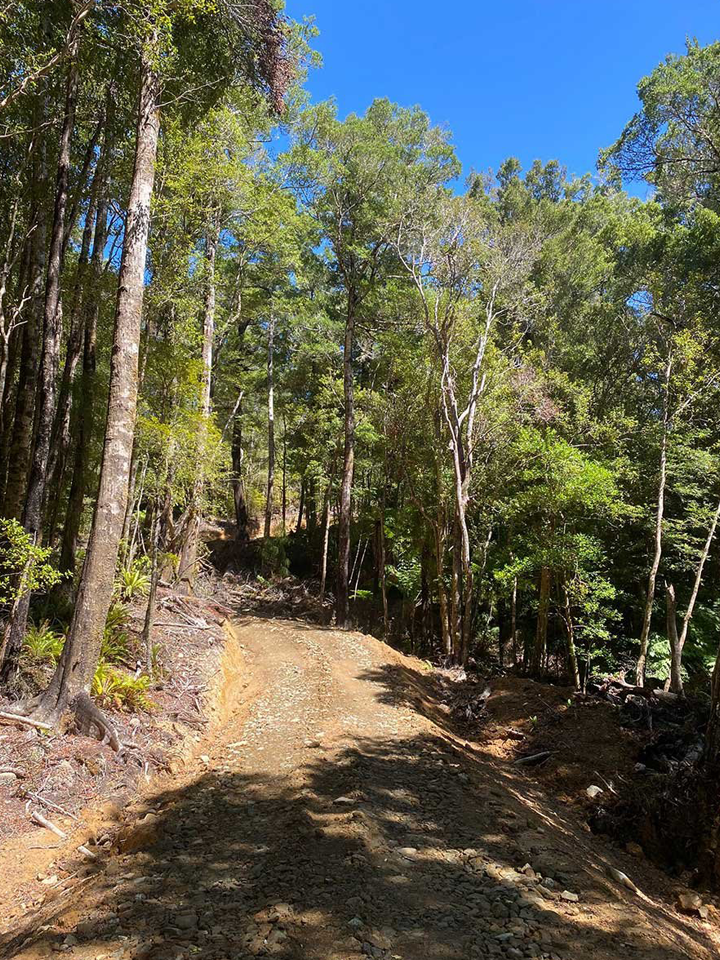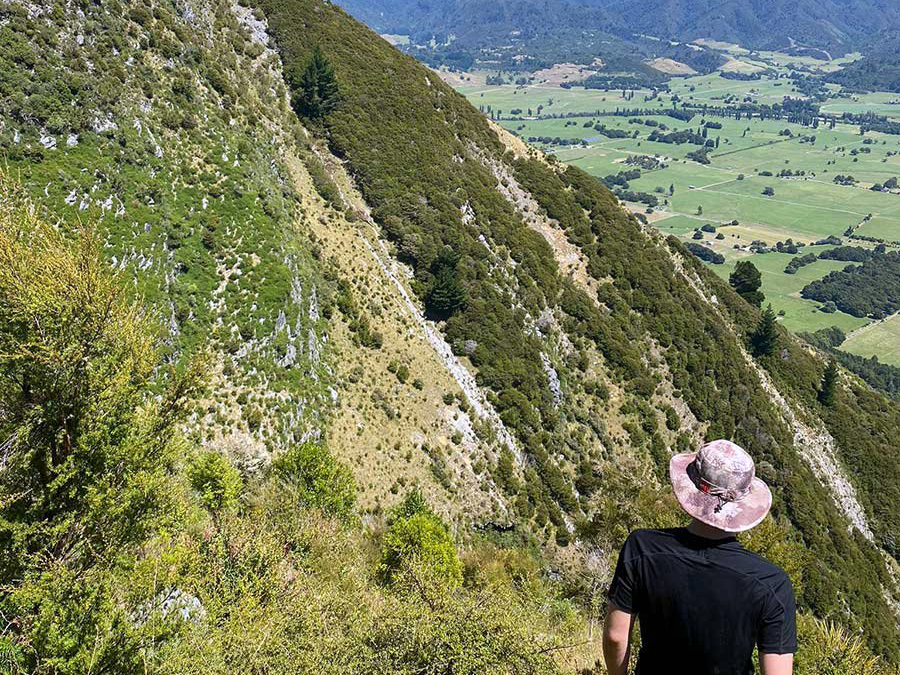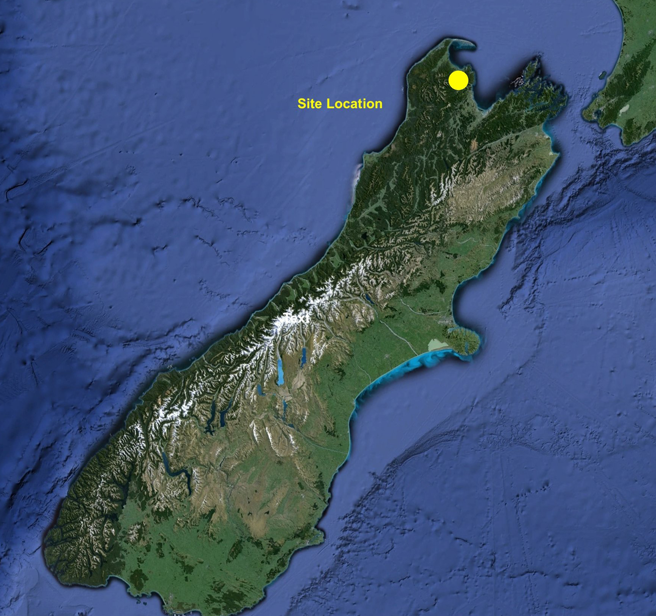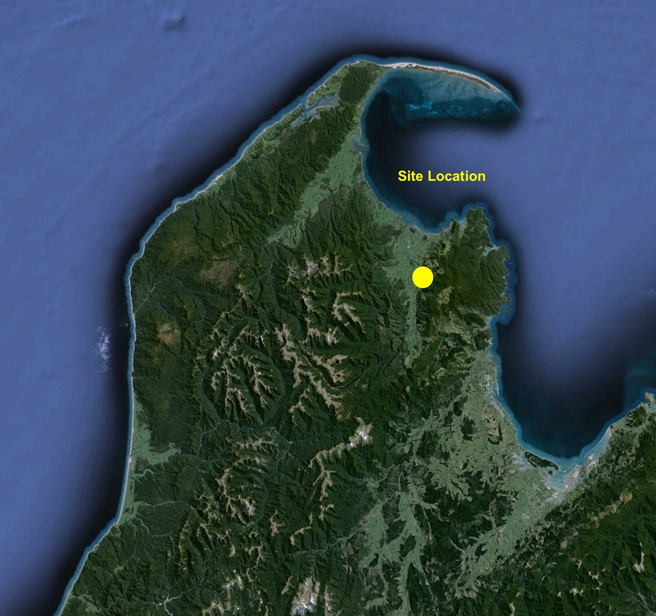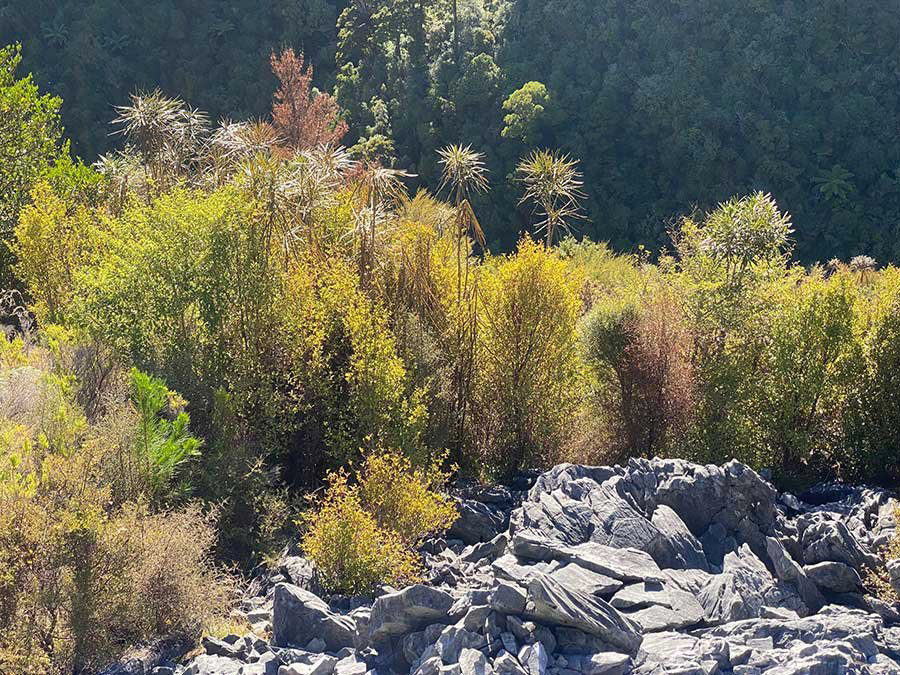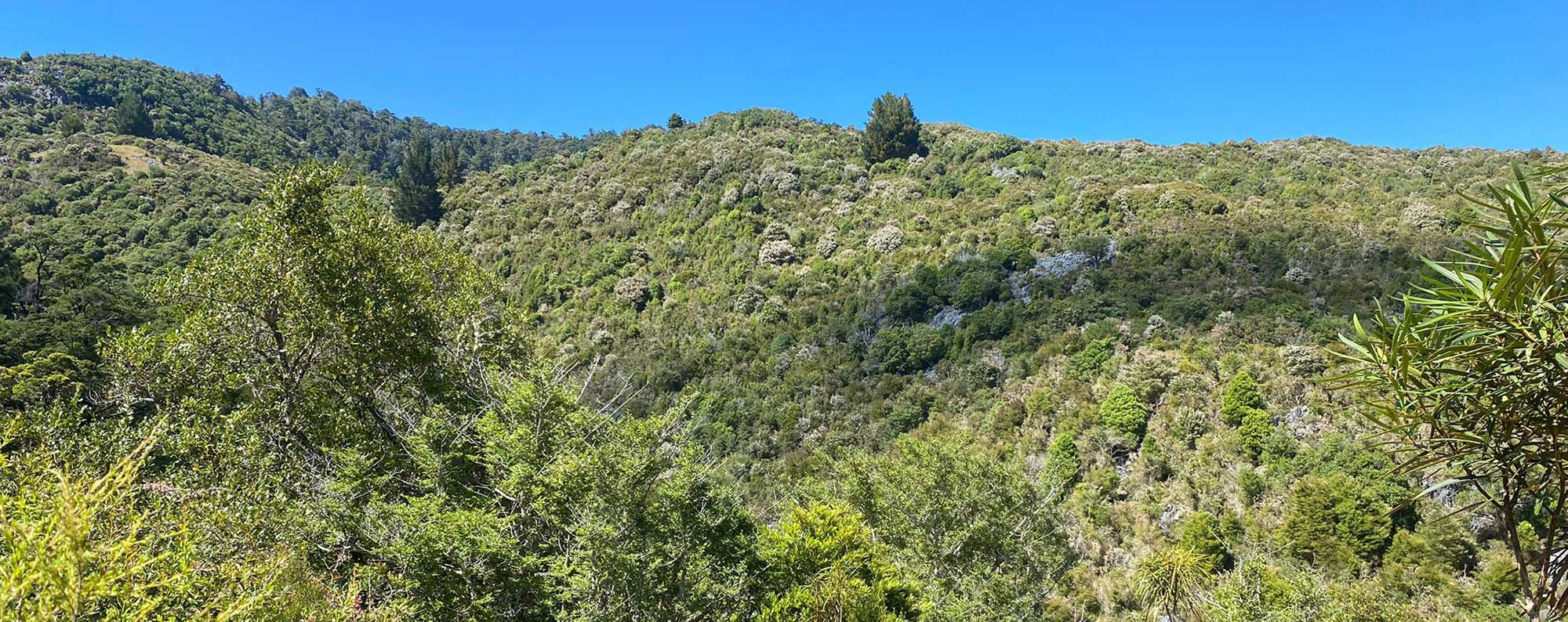
East Takaka Project
Te Ngāhere - The Forest
The project started life in 2021 when Angus purchased an excessively steep 135ha site comprising mainly naturally regenerating farmland on the eastern slopes of the Takaka valley. Most of the property was over 40 degree slopes and with very difficult access. It was only suitable for carbon sequestration, but most had started regenerating before 1990 so only 42ha was eligible for registration in the ETS.
Late in 2022 the neighbouring property to the rear became available so Angus managed to purchase this primarily for access into the top of the original piece. This additional land was very different; being much flatter and almost entirely covered in recovering beech forest. It was recovering from native logging during the 1970’s which had stripped out most of the podocarps and largest red beech trees. The recovery of this area after logging is spectacular, with regenerating beech trees now re-filling the canopy, and good numbers of sapling podocarps appearing.
While it wasn’t their original plan, with the purchase of the second piece Angus now has over 210ha of forest bordering on East Takaka Scenic Reserve, which in turn connects with the Abel Tasman National Park. The property will provide protection of a fantastic corridor of native forest from the Canaan Downs area right down to the bottom of their property at just 100m above sea level.
A pleasant surprise for the landowner was that in one of the steepest gullies (where logging would have been impossible) had an area that must have survived some of the farming land clearance. This valley includes remnant forest giants of Matai, Rimu, Kahikatea and Totara measuring up to 2m in diameter.
The landowner has been able to establish a walking track network, completed an ecological assessment of the property, discovered loads of caves (a few containing bones of moa or kiwi), started poisoning wilding pines and installed a predator control network of over 150 traps. The walking tracks showcase the forest, karst limestone landscape, bluffs and caves and now extend to over 10km of new tracks linking in with the Rameka Mountain Bike Track which runs along the boundary.
The predator control has removed scores of rats, and Angus is excited to get the results of the first planned bird survey in October 2024. The property is home to bellbird, tui, kereru, ruru, robin, tomtit, kakariki and with occasional karearea and kea.
Te Tāngata - The People
The landowners is Angus Malcolm.
The East Takaka Project is located in the Takaka Valley, Golden Bay.
Wāhi - The Location
Technical Stuff
The East Takaka Project is being undertaken under the Permanent Forest Category of the New Zealand Emissions Trading Scheme. The project issues New Zealand Units (NZUs) based on New Zealand Government rules for carbon sequestration rates by indigenous forest.
Once the NZUs are sold to a carbon offset buyer, they are cancelled in the New Zealand Emissions Trading Registry so they cannot be used by (or sold to) anyone else.
East Takaka Project
Project Name
42 ha
Project Area
Angus Malcolm
Project Owner
Landowner
Project Developer
Takaka, Tasman, New Zealand
Project Location
Marginal grazing land with some native regeneration
Baseline Scenario
Permanent forest protection
Project Scenario
Afforestation/reforestation (A/R): Enhanced natural regeneration
Activity Type
Carbon sequestration; biodiversity conservation; water quality protection; climate resilience
Project Benefits
Not applicable
Trees Planted
TBC
Carbon Credits Issued
New Zealand Emissions Trading Scheme - Permanent Forest Category
Carbon Credit Standard
Ministry for Primary Industries
Verifier
Carbon Credit Registry
Credits available for Business Clients
Carbon Credit Status
Whāia Te Pūtea - Follow The Money
Conservation costs money. The main cost elements are:
Establishing a forest. This forest was established by nature because it naturally regenerated after the land was no longer used for grazing.
Conservation management costs. This includes pest and weed control, forest monitoring, and the administration of the carbon project (carbon returns, registry account management and general administration).
Opportunity costs. This is the revenue that the landowner has given up to enable forest conservation to happen.
Carbon credit revenue goes to cover these costs.

